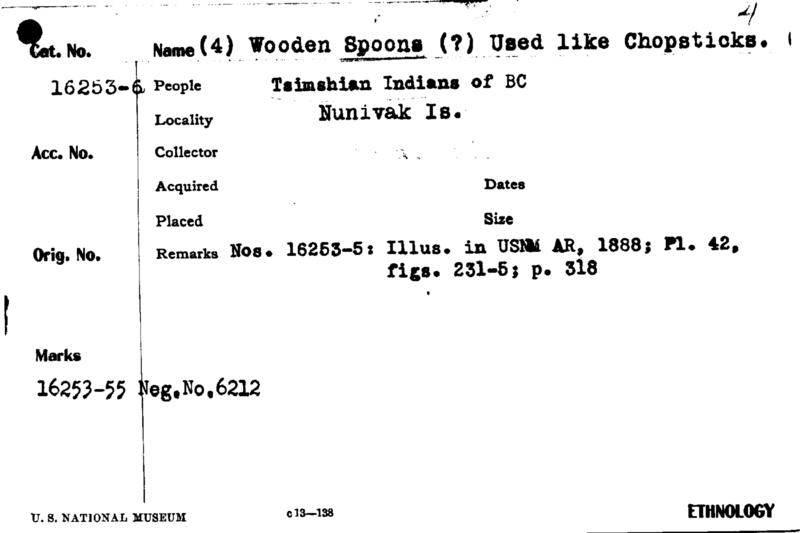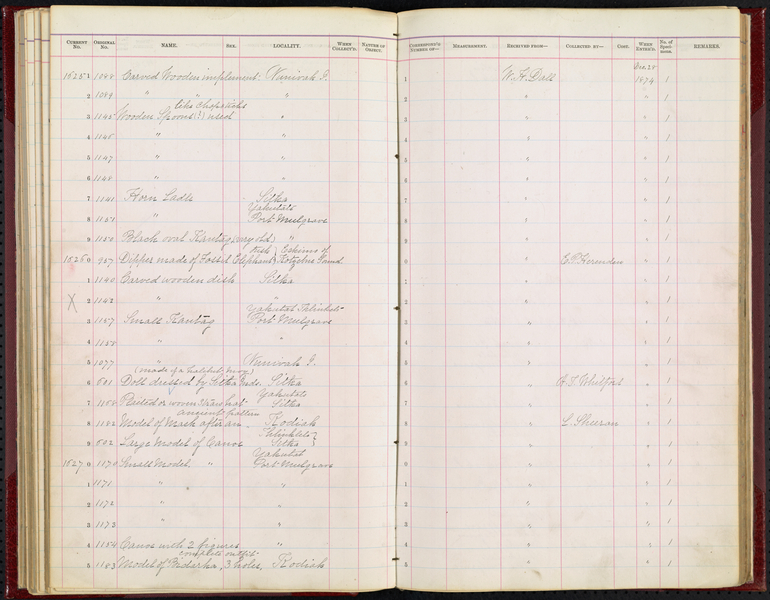Wooden Soapberry Spoon Item Number: E16255-0 from the National Museum of Natural History




Notes
FROM CARD: "16253-6. NOS. 16253-5: ILLUS. IN USNM AR, 1888; PL. 42, FIGS. 231-5; P. 318." A soapberry spoon.Anthropology's catalogue card and ledger book list the locality for E16253 - 6 as Nunivak Island, however this appears to be a cataloguing error. These artifacts are Dall original #s 1145 - 1148, and Dall's field catalogue, filed under accession no. 3258, identifies them this way: "Wooden utensils used like chopsticks, Chimsyan [sic] Indians, Main Land S. E. of Sitka."This object is on loan to the Anchorage Museum at Rasmuson Center, from 2010 through 2027.Source of the information below: Smithsonian Arctic Studies Center Alaska Native Collections: Sharing Knowledge website, by Aron Crowell, entry on this artifact http://alaska.si.edu/record.asp?id=515, retrieved 4-24-2012: Soapberry spoon. Soapberries are plentiful in the upriver territories of the Nisga'a and Gitxsan, who traditionally traded them to people on the coast. The berries were dried, whipped with water into foam, sweetened, and served with flat, beautifully carved hardwood spoons. During an 1858 feast that marked a high-ranking girl's initiation into the Destroyer secret society, her father ordered two large canoes to be carried into the house and filled with soapberries, frothed with black molasses. The guests were unable to finish the huge serving. "The Tsimshian word for soapberry is "as." You whip it up, add a little sugar, maybe some salmonberries or blueberries." - David Boxley (Tsimshian), 2009.
Item History
- Made in Alaska, USA
- Collected in Alaska, USA
- Received from U.S. Coast Survey during 1874
What
- Name
- Wooden Soapberry Spoon
- Identification Number
- E16255-0
- Type of Item
- spoon
Who
- Culture
- Tsimshian
- Received from
- U.S. Coast Survey
Where
- Holding Institution
- National Museum of Natural History
- Made in
- Alaska, USA
- Collected in
- Alaska, USA
When
- Acquisition Date
- during 1874
Other
- Accession Number
- 003195